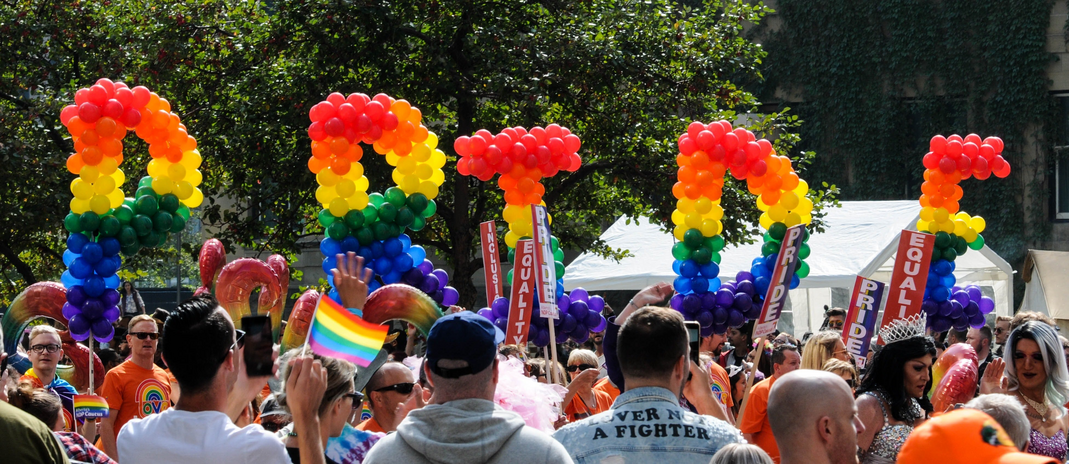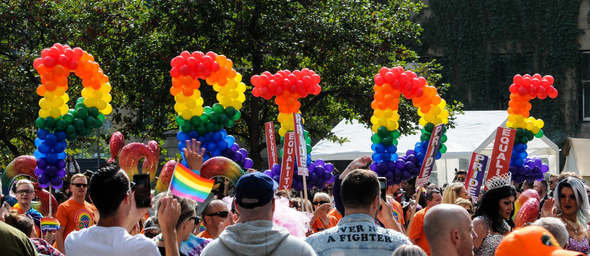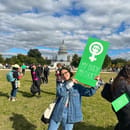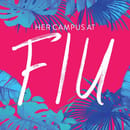Happy Bisexual Visibility Month to my girls, gays, and non-binary friends! For the whole month of September, we celebrate the tremendous strides in Bisexual history, advocate for the acceptance of the Bisexual community, and commemorate those who have tirelessly fought for Bisexual rights. Bi-visibility month is an amalgamation of several important dates to recognize and affirm the bisexual community. Bisexual Awareness Week is annually held from September 16th through the 23rd, with September 23rd being the honorary Celebrate Bisexuality Day. The month of September is not only to celebrate and recognize Bi-folks; but to address the prejudices that exist both inside and outside the LGBTQ+ community and advocate for mental and sexual health.
- Quick History Lesson
-
Let’s take a quick American history lesson on how Bisexual visibility month came to be. Charles Gilbert Chaddock, an American neurologist, is credited for the first use of the word “Bisexual” to refer to being sexually attracted to both men and women in his 1892 translation of Richard von Krafft-Ebing’s “Psychopathia Sexualis”. Prior to this moment, the word “Bisexual” was used to refer to hermaphroditic plants that have both male and female reproductive structures.
The concept of Bisexuality and the study of human sexuality as a spectrum came into fruition in the mid-1900s by Alfred Kinsey. Kinsey wrote two books based on human sexuality, “Sexual Behavior in the Human Male (1948)” and “Sexual Behavior in the Human Female (1953)”. In 1948, Kinsey created the Kinsey scale, a scale that rated attraction to the same or opposite gender with 0 being exclusively heterosexual, and 6 being exclusively homosexual. Those who did not identify as exclusively one or the other had a middle ground that better fit their orientation.
Moving forward to the height of the queer civil rights movement in the 1960s, several Bisexual activists emerged to play a huge role in organizing protests and pride marches. In 1966, Stephen Donaldson A.K.A Donny the Punk founded the first on-campus LGBTQ+ student group “The Student Homophile League” at Columbia University. In 1969, during the midst of the Stonewall riots, Brenda Howard coordinated multiple pride events. Because of this, Howard is often known as the “Mother of Pride”. Bisexual pride continued to strengthen in the late 1990s, especially after the unveiling of the Bisexual Pride flag by Michael Page in 1998.
In 1999, Celebrate Bisexuality Day was organized by three bisexual activists: Wendy Curry, Michael Page, and Gigi Raven Wilbur at the International Lesbian and Gay Association conference in Johannesburg, South Africa. To quote Wendy Curry:
“We were sitting around at one of the annual bi conventions, venting and someone – I think it was Gigi – said we should have a party. We all loved the great bisexual, Freddie Mercury. His birthday was in September, so why not Sept? We wanted a weekend day to ensure the most people would do something. Gigi’s birthday was Sept 23rd. It fell on a weekend day, so, poof! We had a day.”
Obviously, this is not the full extent of Bi history, there are so many pioneers and influential groups that have made it possible for the rest of us to explore and find pride in our sexuality. For that very reason, it is important to look back and recognize the incredible progress that has been made and continue not only advocate for Bi rights but for all in the LGBTQ+ community.
- We Still Have Work To Do
-
Bisexual visibility month was created for Bi folks to find solace in a community that validates their sexuality and cares for their wellbeing. The month of September is important for those who are fighting feelings of isolation, those who are exploring their sexuality, allow people to meet others who have similar experiences, and provide resources to those who may not have access to them. This is the time where allies and LGBTQ+ folks educate themselves on Bi history, culture, and political policies that threaten the community.
- Helpful Resources
-
I’ve collected a few resources that hopefully help you in your journey!
Pridelines Miami: Pridelines provide safe space, social support, skills building, leadership development, and referrals to mental health, health care, and support services for LGBTQ youth and straight allies throughout South Florida.
LGBT Visitor Center on Miami Beach: The LGBT Visitor Center builds a strong community by fostering social engagement and community wellness. Enhance the health and well-being of the LGBTQ communities by providing activities, programs, and services that create community and empower community members.
Alliance for GLBTQ Youth: The Alliance for GLBTQ Youth a non-profit organization in Miami-Dade County committed to providing prevention, early intervention social services, and advocacy to gay, lesbian, bisexual, transgender, and questioning youth, their families, and communities.
The Trevor Project: The Trevor Project is an American non-profit organization focused on suicide prevention efforts among lesbian, gay, bisexual, transgender, queer, and questioning youth. They have an array of resources and programs intended to help members of the LGBTQ+ community.



